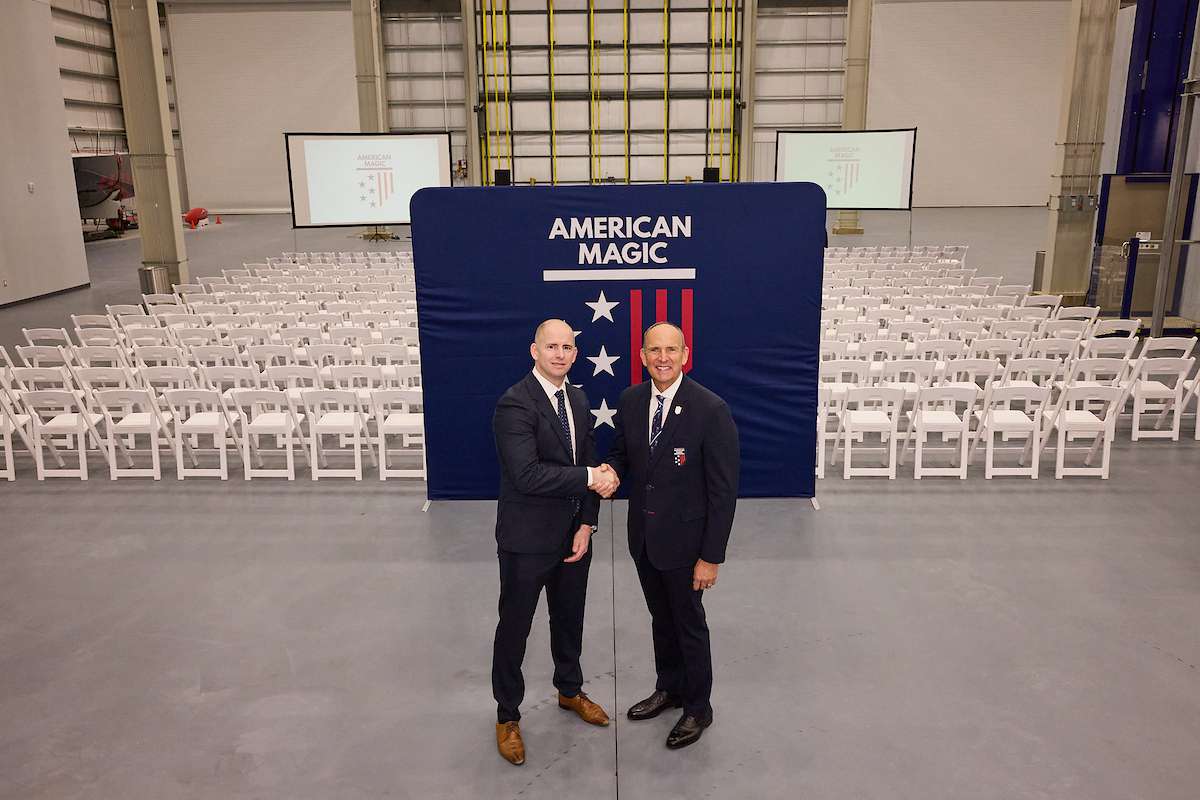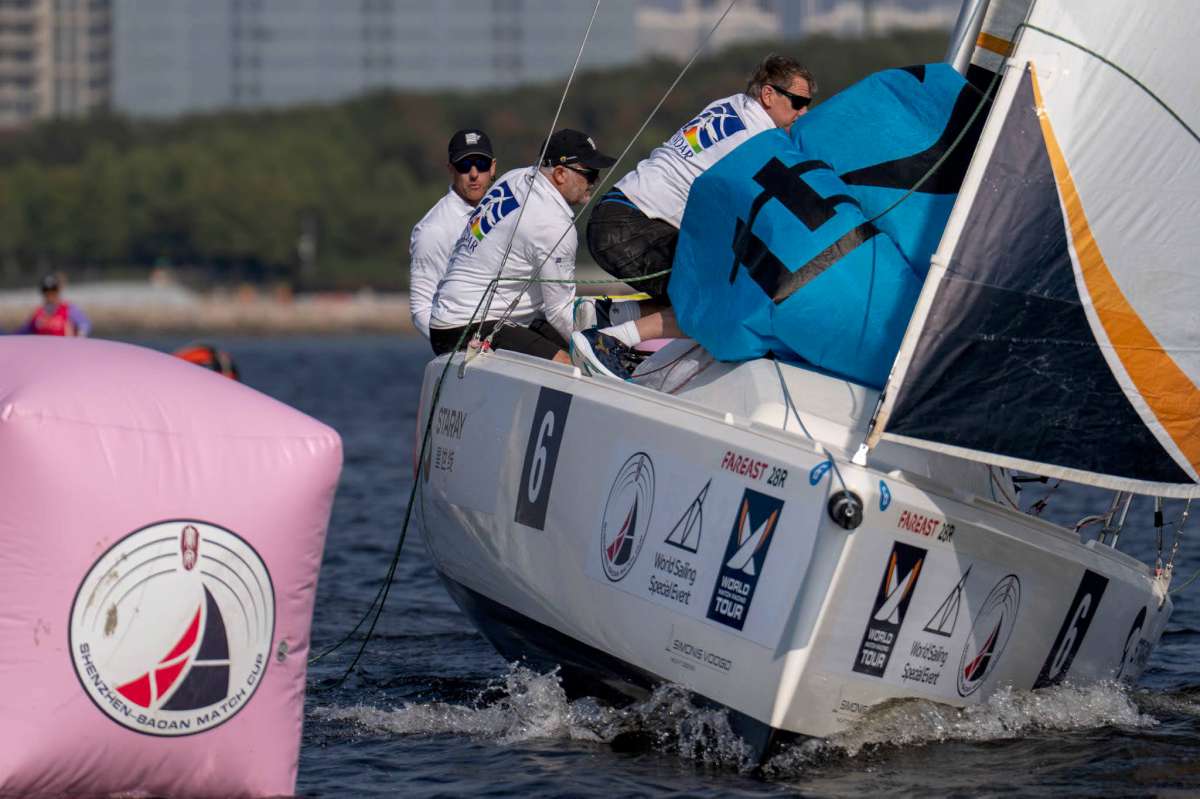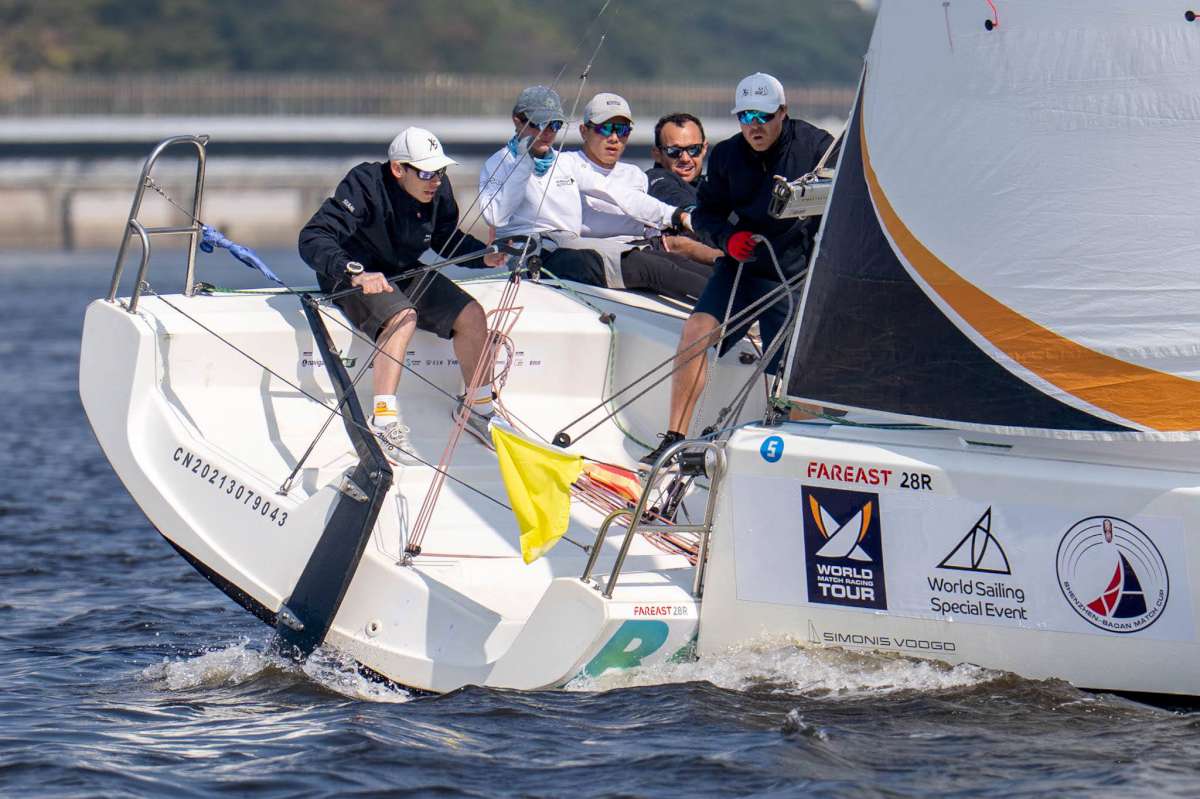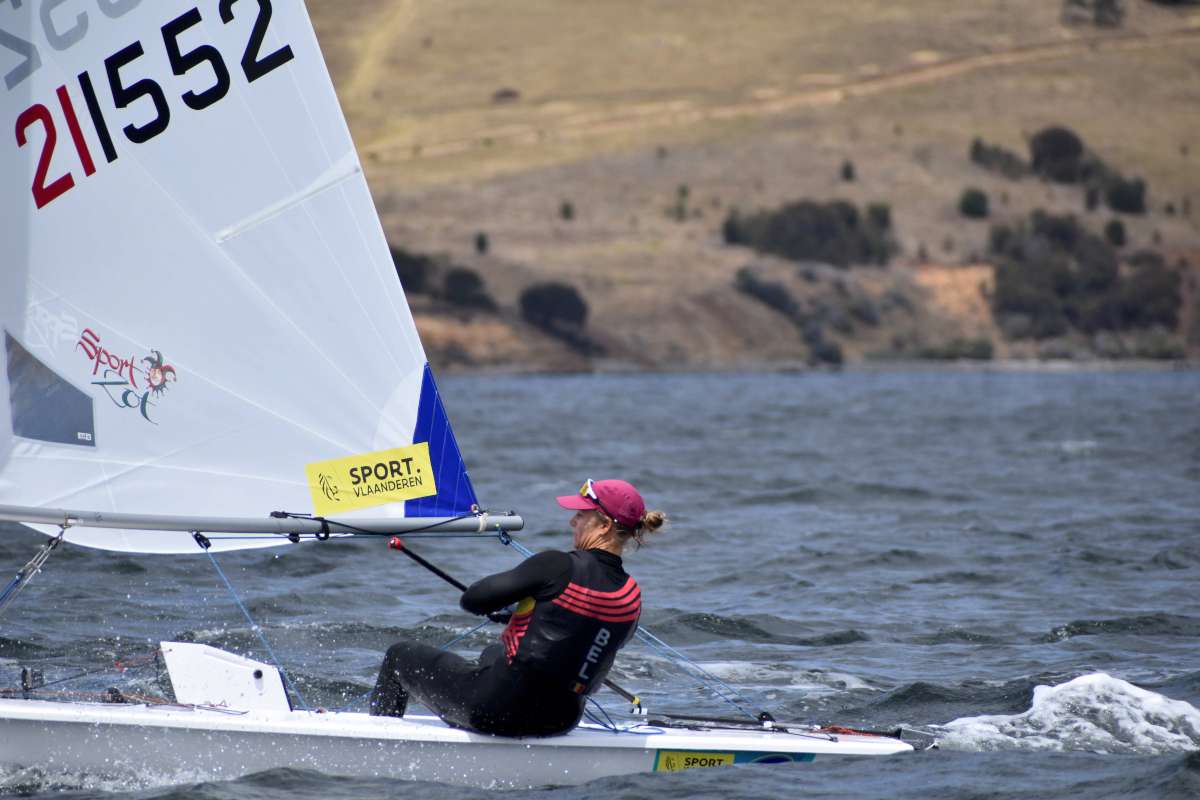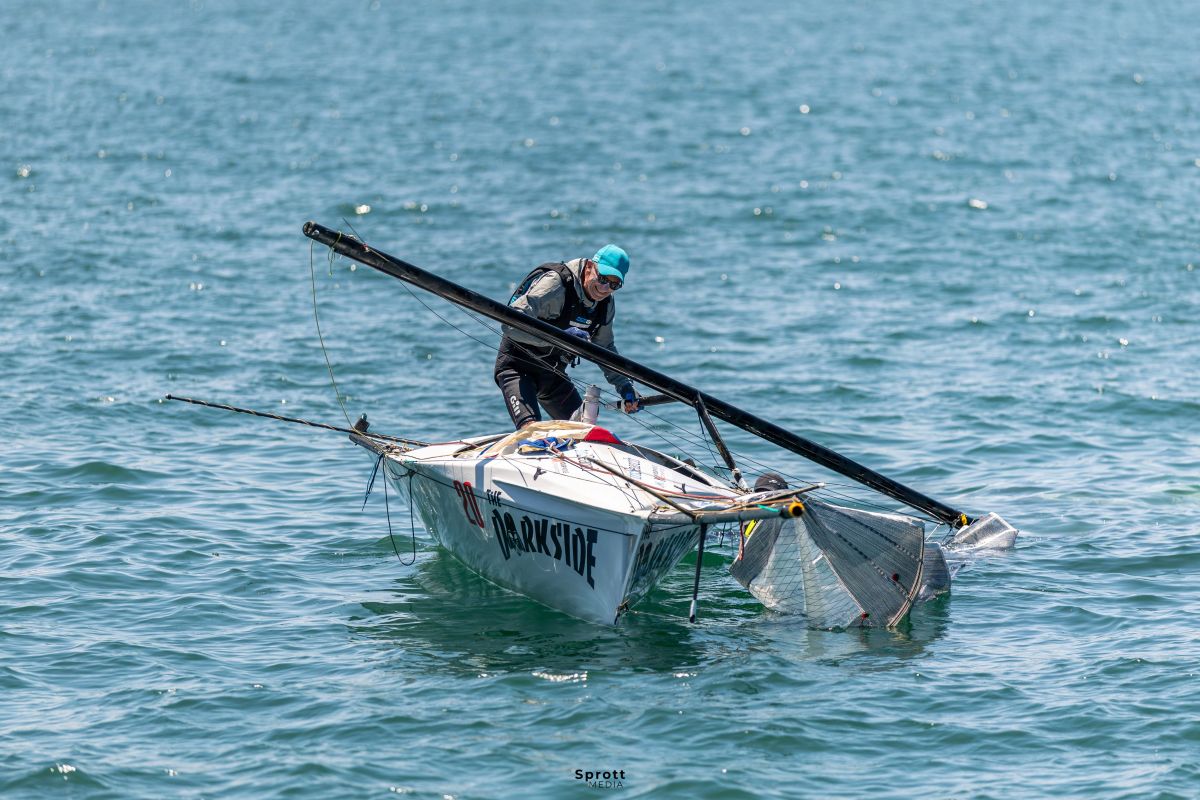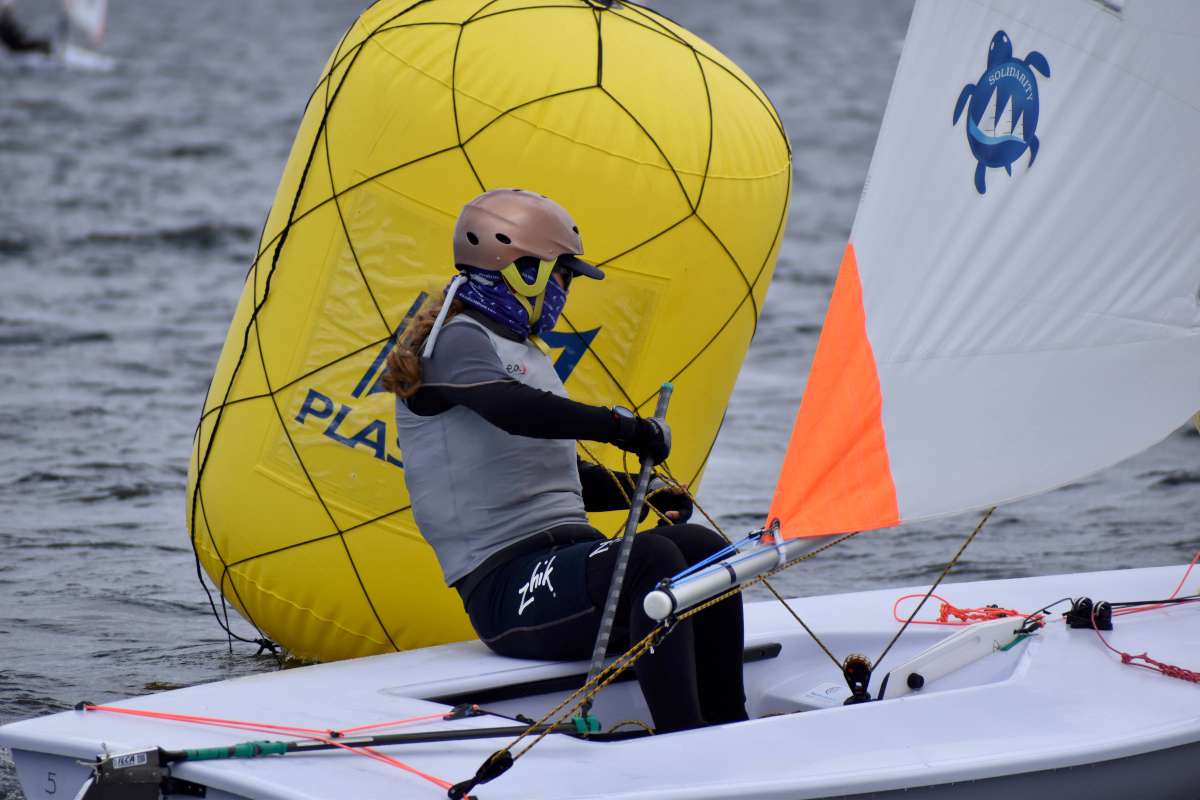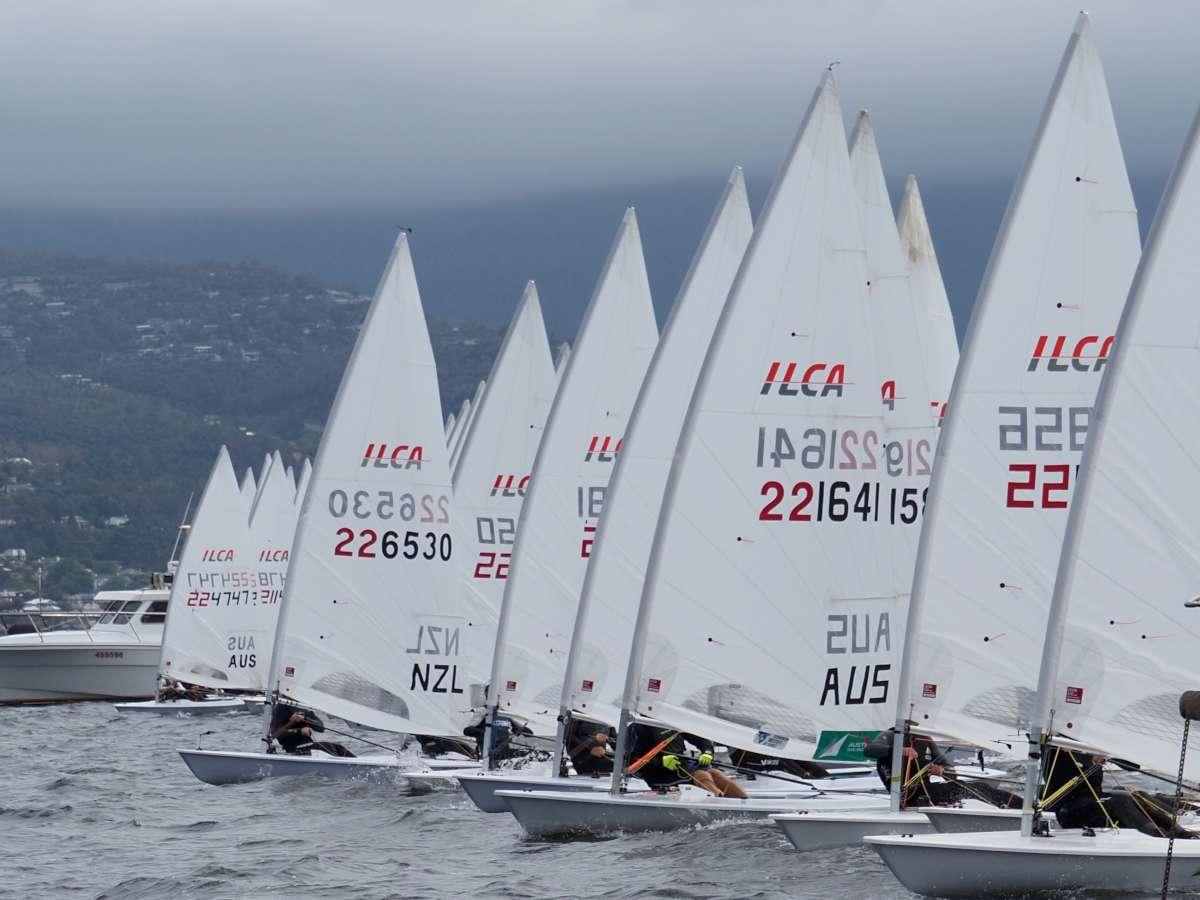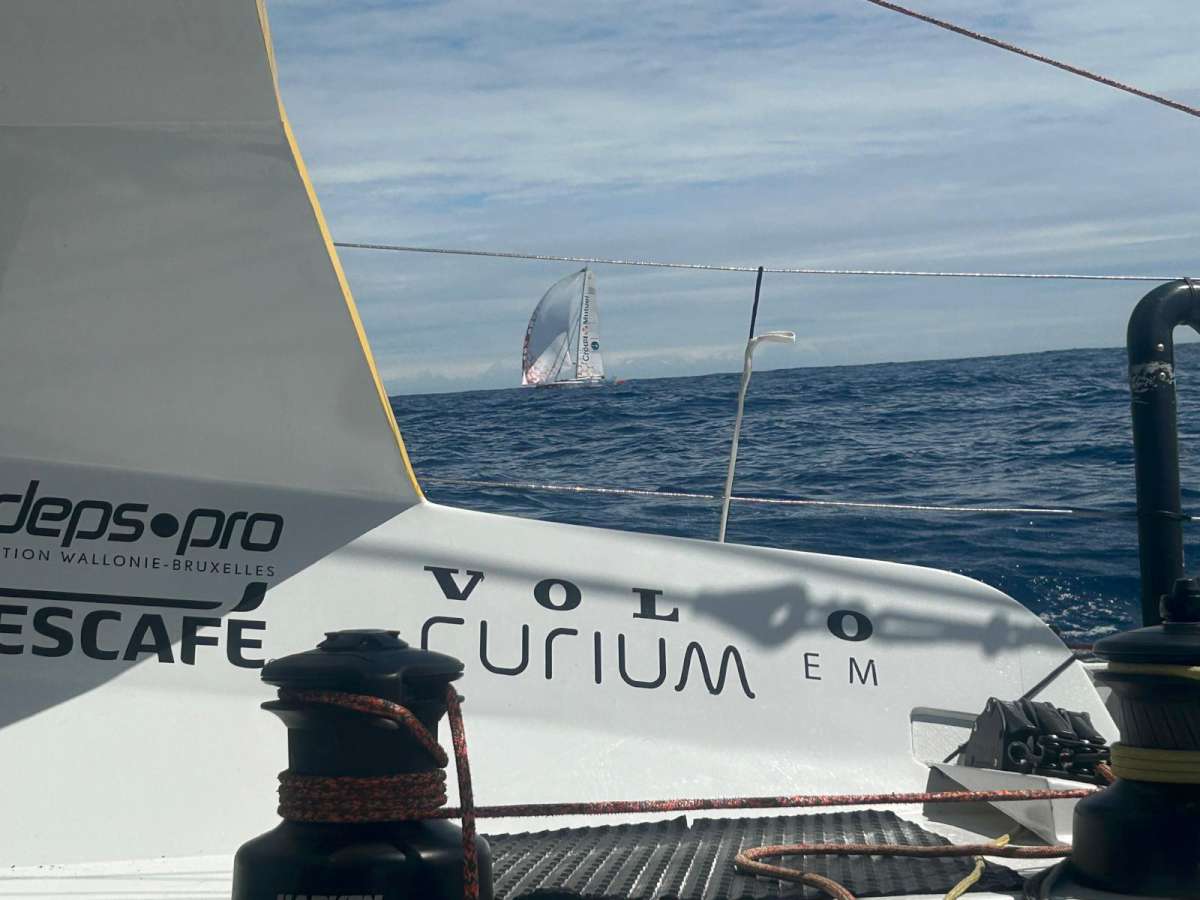Practical: heavy-weather sailing
Jim and Linda Colliers' worst nightmare comes true when they find out a cyclone is on the way when they are in the middle of nowhere.
What on earth were we doing here, hundreds of miles out in the Indian Ocean beyond the reach of human help and about to experience our first cyclone at sea? It was a question Linda and I were to ask ourselves many times in the following few days.
You hear about them, you read about them, you think about them and hope you never, ever, experience one at sea. Of course, you never will, anyway, right? Cyclones are predictable and only occur in recognised areas within well defined seasons. All you have to do is remain well clear of cyclonic regions, and if you really do have to make a passage through such an area you simply make sure the passage is made outside the cyclone season, and you will never encounter a cyclone.
Wrong! Despite all the most careful planning while on passage from Cocos Keeling Island to Sri Lanka in the early stages of our circumnavigation we were unfortunate enough to experience an out-of-season cyclone, even though official records of the event state: “Considering the intensity reached the formation of this early-season depression is rather unusual.”
Let us tell you a little about “our” cyclone, how we coped with it and – maybe – when the time comes, you will be better prepared to cope with “yours”.
Cocos to Sri Lanka
After spending a very pleasant 10 days at Cocos Keeling Island, our first truly tropical island anchorage, we departed on September 24 in company with seven other boats for Sri Lanka and three for South Africa. Three other vessels had left a few days previously, also outward-bound for Sri Lanka.
After such a calm anchorage we found the seas outside Cocos lumpy and uncomfortable but anticipated that once clear of the islands the seas would settle and the wind would ease slightly. Not that it was excessive to start with, blowing a good 20-25kts, but we would have preferred something around 15-20kts. Getting choosy, weren't we, but at least it was blowing from the right direction.
The passage from Cocos Keeling Island to Sri Lanka is about 1,500nm in a direct line but owing to the strong east-setting current we had to expect around the equator at this time of year it was necessary to make a dogleg to the west to counteract the effect of the current before we could lay our desired course.
We were now finding our expensive long-range SSB transceiver very useful, not so much for obtaining weather forecasts, which were virtually non-existent on a routine basis for this region of the world, but for keeping in touch with other boats who were ahead of us and could give us their actual weather information, and generally keeping in touch with one another on daily, sometimes twice-daily, radio schedules.
Through these schedules we heard the boats which had left ahead of us were having quite a rough passage.
Early warning
On the third day out from Cocos a German boat equipped with weather-fax and just about to arrive at Sri Lanka advised the weather chart was showing a tropical depression on our route. As a result of this one of the boats ahead, after a concerted effort, managed to establish contact with Perth Radio to have it confirmed that there was a tropical depression in the area. Not only that, but it was likely to turn cyclonic. Just how lucky can you get!
The forecast indicated the position of the tropical depression to be to our north and expected to head southeast, this meant that to place as much distance between us and the depression we had no option but to head west and to get as far west as possible.
Subsequent analysis of the synoptic chart and track record of the cyclone (obtained on our return) shows this was a bad move. The depression was actually moving west at that time, and we were in fact heading towards it, not away from it.
The wind strengthened to a fairly consistent 35-45kts and for the next 24 hours we ran due west, fast and furiously over a now tempestuous sea with the log (no GPS at that time) at times indicating speeds of 9kts – not bad going for a fairly heavy 10m steel ketch.
With the increasing wind, and seas, sail was gradually reduced from twin working headsails and deep-reefed mizzen until we were finally running with just a working jib.
Sea Brake deployed
We deployed the Sea Brake, an Australian-designed device you tow behind the boat to slow it down and also, among other things, help it maintain a steady course.
While the Sea Brake certainly helped us maintain a steady course, it did not prevent us from being pooped on one occasion when a large wave broke over the stern into the cockpit. Luckily the wheelhouse washboards were in place but even so a considerable amount of water managed to find its way between small gaps into the wheelhouse, successfully dampening our bunks.
At 3am the next morning, accompanied by torrential blinding rain the likes of which we have never seen before, a more violent than usual gust, guesstimate 50-60kts, blew out the jib sheet, leaving the sail flapping madly in the strong wind and heavy rain. Obviously the sail had to be dropped as soon as possible before it flogged itself to pieces.
All hands on deck
The cry went out, wakening Linda (dozing in the wheelhouse), who on scrambling out of her bunk literally flew across the wheelhouse, bashing her head, as Liberator, without any steadying sail, started to roll violently in the heavy seas.
With a cyclone watch now current, regular forecasts were being issued for the area and the next forecast completely contradicted the previous one, now indicating that there was a possibility of two cyclones, still to the north of us. Not only that but they had recurved and were heading southwest, right across our track.
This latest information now placed us very close to the dangerous quadrant of the cyclone. The forecast immediately following reverted to mentioning only one – at least our problems were now halved!
Preparing for the worst
We had no option now but to heave-to and prepare for the worst, although if the position given of the cyclone was correct, and if it continued on the forecast heading we thought (and hoped and prayed), we would be far enough away from the centre to avoid the sort of ultimate seas and winds associated with such a phenomenon.
On the next radio schedule between all the boats it was agreed that we would increase the schedules to an hourly basis, not only to provide moral support but to raise the alarm if any did get into difficulties.
On one of these skeds a faint, but distinct plaintive appeal of “Beam me up, Scottie” was heard over the airwaves. The request was never complied with – to our knowledge!
On heaving-to the Sea Brake was recovered. This was just in time because the bridle was nearly chafed through. We then closed up and battened down.
Liberator's stormboards were placed over the wheelhouse windows, the boat's weakest point. All loose gear was stowed below and any that had to be left on deck was double-lashed. Sails were taken off and securely stowed in the cockpit, both for security and to reduce cockpit area in case we were pooped again. Ventilators were removed and opening ports and hatches clamped tight. Without any air flow life down below soon resembled living in a sauna.
We then retired to our bunks, having done all we could. The safest place for us was snug in our berths, held in by our lee cloths; personal injury is one of the nightmares of long-distance sailing and once you have done all you can for your vessel you must protect yourself.
Meals were non-existent, and we survived on biscuits stored on board for just such an occasion.
Watches were also non-existent because sleep was virtually impossible. We tried to maintain some sort of lookout, although at times only token in the much reduced visibility. Regular broadcasts of our position and status were made on VHF channel 16 in case other vessels were in close proximity.
We remained hove-to under a backed staysail, rocking and rolling, pitching and heaving, covered in fume and spray with decks constantly awash and slowly being set southwest for the next 36 hours.
The seas were huge but regular and not dangerous and Liberator coped magnificently with it all. At no time did we feel seriously threatened, although we were always mindful that the ultimate sea, a rogue, could arrive unannounced.
The wind never seemed to exceed 50kts, and we never did experience full cyclonic conditions. In fact, we had gone through much stronger winds the previous night as we ran in the effort to get as far west as possible.
After 36 hours conditions slowly moderated, the cyclone, subsequently named Aviona, was downgraded to a tropical depression and forecast to weaken, finally moving off, chasing the South African-bound boats, much to their alarm – cyclones have been known to re-develop.
As soon as we restored some sort of order to the boat we heaved a sigh of relief and got under way, heading northwest close-hauled under full working sail with a very pleasant 15-20kt north-easterly breeze. Phew!
Storm in a teacup?
A storm in a teacup? No way. Aviona was a fair-dinkum cyclone. It had to be to be named.
We were fortunate, and two boats some miles to the north of us did experience full cyclonic conditions. The singlehanded Canadian ketch Makoolis experienced three knockdowns, losing all electrical power for three days through water damage. The Sydney-Hobart veteran sloop Siandra experienced full cyclonic conditions, being laid flat for a good 15 minutes and subsequently reported they had experienced force 12 conditions.
The meteorological office responsible for this particular region of the Indian Ocean, Meteo France De La Reunion, who subsequently named, tracked and recorded the cyclone in their annual report, is the source of the information we obtained.
WHAT COULD/WOULD WE DO DIFFERENTLY TODAY?
In the light of significant improvements not only in weather forecasting but in its distribution (see below) is there anything we could/should have done to avoid the cyclone?
We think, given our circumstances, there is little more that we could have done. Liberator and her crew were fully prepared to meet cyclonic conditions.
While modern-day communications will certainly give today's cruising vessel much more warning than we had, when you are 1,000nm from land, the average craft has little choice but to prepare to weather the storm. This is often a safer course of action than running for shelter into what may eventually turn out to be a lee shore with all its frightening consequences.
While satellite communications have come a long way, most are still also outside the scope of the average cruiser in terms of price and an HF SSB transceiver is still worth its weight in gold in terms of obtaining accurate weather information through the Bureau of Meteorology's High Seas Forecast and warnings service, which are broadcast several times a day. Schedules and frequencies of the above can be found at www.bom.gov.au/marine/radio-sat/marine-weather-hf-radio.shtml
The New Zealand Meteorological Service broadcasts similar information on HF – www.metservice.co.nz/default/index.php?alias=highfrequencyservicestxt
HF email and weather services are also available through Winlink, Sailmail or Airmail (all HF email providers). We recommend serious international cruisers subscribe to Sailmail where – for a small fee and obtaining the appropriate modem – you can receive weather maps and text weather forecasts broadcast by the US Coast Guard. It is also possible to request no-charge text forecasts directly from the US National Weather Service through Sailmail. More information on this service can be found by exploring www.sailmail.com and scrolling down to the section: “Can I receive weather information via the Sailmail system?”
There is much more data available for skippers who are prepared to research the subject well in advance of their departure. However, we strongly recommend you allow plenty of time for the research and not leave it to the last minute.
(Our thanks to Mal Riley of the Hobart office of Bureau of Meteorology for providing the above links. At the time of writing, Mal was “somewhere” in Antarctica!)





